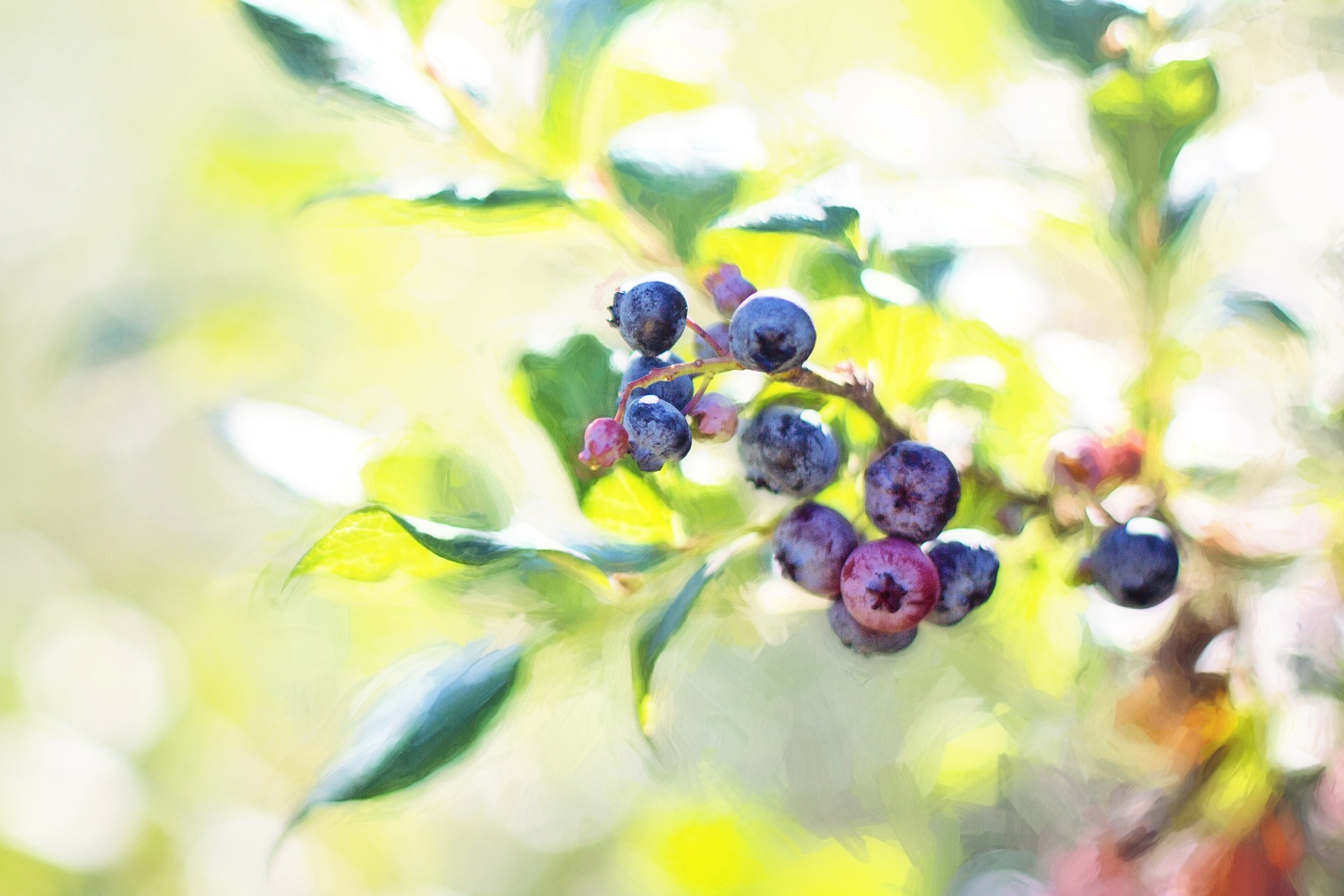Bruberries
A small boy of about four sits in the grass next to a bush with small blue berries on it, his hands and mouth are smeared blue. He has a jar in one hand, but it is empty, as the berries he picks go straight into his mouth. "Oi Finney! You're supposed to be picking them for the tarts, not eating them all!" admonishes an older woman with a smile. She has a basket in one hand and a small comb in the other. She deftly leans over a bush and moves the comb through the shrub picking up most of the berries off it. She deposits them in the basket which is now half full with the small blue fruit.
These small wild forest berries, a cousin of the blueberry, were once abundant in the forests of Amberjack Bay. In the summer families would gather their fruit, using special combs for harvesting the fruit more quickly. Anything that wasn't eaten right away would be baked into pies and cakes.
In recent decades however, the shrubs have born less and less fruit and one must go deeper into the forest to find some. Grandparents recall a time when as children they would go gather the fruit every summer but the tradition is becoming less common as the fruit gets harder to find.
Basic Information
Anatomy
The plant is a shrub bearing small round bluish-purple berries. The berries grow singly or in pairs on a small stem. They are similar to their cousin the blueberry but somewhat smaller and are considered sweeter.
Growth Rate & Stages
The shrubs are perennial and they flower in the spring with the berries becoming ripe in the summer.
Ecology and Habitats
Bruberries prefer an acidic soil and grow in the shade. They often grow near brooks, creeks and stream as the soil is more moist near these natural sources of water. They can also often be found near shrines or old ruins of shrines.
Additional Information
Domestication
The berries grow wild in the forest around Amberjack Bay and have resisted all attempts at domestication. Their seeds or cuttings do not seem to do well under careful tending in good garden soil.
Uses, Products & Exploitation
Bruberries are often made into preserves and jams. They are baked into tarts, pies, cakes, muffins and other baked goods. They are also eaten raw by themselves or with a bit of sugar and clotted cream.
Although the berries do not have any particular medicinal properties, the bakers of Durnatel often claim that a good bruberry tart helps brighten any mood and is good for what ails you.
The skin of the berries is very thin and bruises easily. The fruit has to be eaten or cooked right away and as such does not make a good export good off the island.
The bruberry leaves can be brewed into a tea that is bitter in flavor but considered by the locals to be good for stomach aches.
Geographic Origin and Distribution
This cousin of the blueberry can only be found on Amberjack Bay.
Scientific Name
Vaccinium myrtillus A.
Origin/Ancestry
Eurasian
Conservation Status
The shrubs themselves are still plentiful but are less likely to bear flowers and fruit in recent years. The cause of this is unclear as other nearby plants seem to be unaffected and the bruberry shrubs themselves are healthy.
Nana Myrtle's Bruberry Tart Recipe
Ingredients1 stick of butter
1 cup of flour
3 heaping spoonfuls of sugar plus extra for the top of the tart
pinch of salt
dash baking powder
1 tbsp potato flour
1 jug of fresh bruberries
Method
Melt the butter and mix with the other ingredients except the bruberries.
Knead the mixture into a dough and push the dough evenly into the sides and base of a round pie tin.
Add the bruberries.
Mix the potato flour with the 2 tbsps of sugar and sift it over the bruberries.
Bake at 425 degrees for until the top is nice and brown but not burnt.


